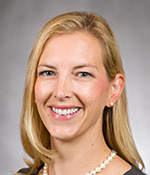Continuing our occasional articles on telepsychiatry, we highlight the expertise of Tara Toohey, MD, who serves on the Board of the American Association for Emergency Psychiatry, and was a guest presenter at CLP 2018.
Telepsychiatry: An Effective Response to the Supply & Demand Conundrum
 Tara Toohey, MD
Tara Toohey, MDDr. Toohey’s first experience of telepsychiatry was when she was working at the University of Hawaii.
“It was to be used only when there was no way a psychiatrist could get to a patient for emergency treatment in the outer islands within a certain timeframe,” she says.
Fast-forward 10 years, working with Vituity, a physician partnership specializing in emergency support services, she is accustomed to using telepsychiatry not just in remote areas but in urban conurbations, such as Los Angeles.
How did the shift to telepsychiatry come about?
Supply & demand
Mostly, telepsychiatry has to do with supply and demand. Increased demand in emergency departments—where one in eight visits involves mental health and substance use disorders—and too few psychiatrists available nationally, create bottlenecks, inefficiencies, and safety risks for patients and staff.
An American College of Emergency Physicians’ poll of 1,700 emergency department physicians in late 2016 showed that 75% saw patients at least once a shift who required hospitalization for psychiatric treatment (21% reported having patients waiting 2-5 days for inpatient beds)—yet only 16.9% of the physicians had a psychiatrist on call to respond to psychiatric emergencies, and 11% had no such support (albeit other options may have been available).
“The impact is not just on quality of care and staff safety, but on the operational efficiencies and finances of the hospital,” says Dr. Toohey. “Psychiatric patients spend an average of 11.5 hours per visit to an emergency department—three times longer than other patients.” Research also shows one psychiatric patient boarding can prevent 2.2 bed turnovers and cost the hospital $2,264 per patient.
“Research has found satisfaction to be high among patients, psychiatrists, and other professionals.”
—Dr. Toohey
Policy guidelines
The American Psychiatric Association (APA) updated its policy on telepsychiatry in early 2018. APA supports telepsychiatry, using video conferencing, as a validated and effective practice of medicine that increases access to care, and as a legitimate component of mental health delivery systems—with the proviso that:
- Its use is for the benefit of the patient.
- It protects patient autonomy, confidentiality and privacy.
- Its use is consistent with APA policies on medical ethics and applicable governing law.
Evidence of effectiveness
“Research has found satisfaction to be high among patients, psychiatrists, and other professionals,” says Dr. Toohey. “Telepsychiatry is equivalent to in-person care in diagnostic accuracy, treatment effectiveness, quality of care, patient privacy and confidentiality.”
Benefits to hospitals and patients of access to 24/7, on-demand patient evaluations include:
- Rapid improvement of clinical quality.
- Reduction in boarding, allowing for efficient bed turnaround and throughput.
- Decreased risk and improved safety for patients, families and care teams.
- Reduction in unnecessary behavioral health inpatient admissions.
- Care plan collaboration with in-person providers.
- Improved rates of patient acceptance by in-patient psychiatric facilities (because a thorough evaluation with documentation has occurred by a psychiatrist and the patient has likely been started on medications if indicated).
Legal and clinical criteria
A physician, or psychiatrist, is deemed to be practicing in the state in which the patient is physically located at the time of treatment. So, the physician must meet the licensure requirements of that state. Yet, each state has its own rules and types of licence required based on various factors such as the type and frequency of the encounter, duration of the treatment, and whether another local physician is involved in the care.
Hospital credentialing for the delivery of telepsychiatry care into an emergency department are typically the same as for an in-house physician. “This is a lengthy process,” says Dr. Toohey. “I’m credentialed at present to do emergency psychiatric care in 10 hospital emergency departments, and it took about eight months in each hospital to even start to see patients because of this lengthy process.”
The Special Registration for Telemedicine Clarification Act of 2018 requires special registration for prescribing without in-person examination.
Additional clinical documentation required includes:
- Your location and that of the patient at the time of encounter
- Technology used
- Name and role of anyone else present for the encounter
- The patient’s continued agreement and satisfaction with the use of the chosen technology
- Any technical problems that occur during the encounter—“and there typically are a few,” says Dr. Toohey.

